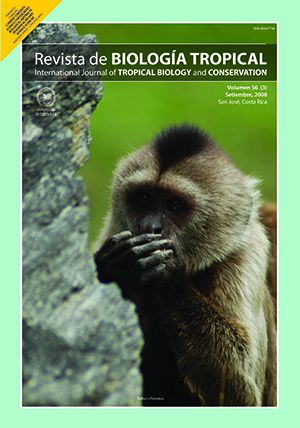Resumen
The organochlorine pesticides (OP) are very stable molecules, due to this stability; they are very resistant in the environment and highly related to fat tissues with a wide diffusion property and an average time life higher then 10 years. We studied sediments (November 2001, April and June 2002) and organisms collected in April and July (2002) from the lacustric zone of Metzitlán, Hidalgo, Mexico. The analysis was performed according to UNEP/IAEA (1982) (sediments) and UNEP/FAO/IOC/IAEA (1986) (organisms) methods. Three chemical families of organochlorine pesticides were identified and analyzed to determine posible toxicological risk. The principal organochlorine compounds found in sediments were g-HCH, d-HCH, p,p'-DDT and the endosulfan sulfate; these xenobiotics come from agriculture lands near the river and lake, used intensively, and most probably carried by the rain and rain flows into the main water body. In the tilapias tissue, p,p'-DDD y d-HCH were detected. The average concentrations of organochlorine pesticides in sediments were within the internacional limits for freshwater benthonic fauna, although lindane (g-HCH) was near the limit. The fish were above the criteria established in the local legislation (NOM-027-SSA1-1993 y NOM-028-SSA1-1993).Comentarios

Esta obra está bajo una licencia internacional Creative Commons Atribución 4.0.
Derechos de autor 2008 Revista de Biología Tropical
Descargas
Los datos de descargas todavía no están disponibles.






